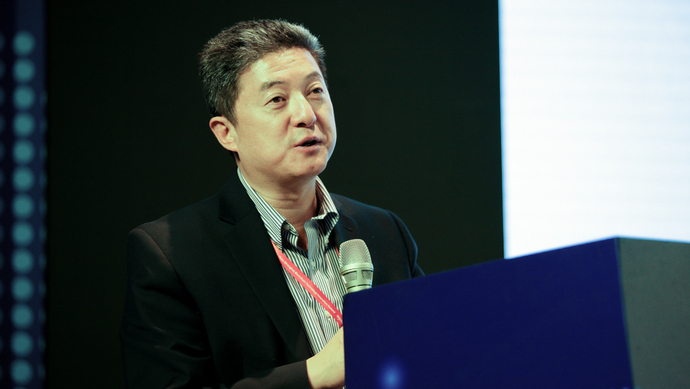Chinese physicist Zhang Shoucheng committed suicide before his company was accused by the United States of helping China acquire high technology
 Zhang Shousheng
Zhang Shousheng
Zhang Shoucheng, a well-known Chinese scientist and tenured professor of Stanford University's Department of Physics, Department of Electronic Engineering and Department of Applied Physics, passed away on Saturday (1st) at the age of 55.
According to a report from online media Hong Kong 01, Zhang Shousheng published a major discovery in Science Magazine in 2017, that is, the angel particle of pros and cons - Majorana fermion (Majorana fermion); this major breakthrough in physics is alsoIt was predicted that he would win the Nobel Prize.
In 2009, Zhang Shoucheng was selected into China's overseas high-level talent introduction program, commonly known as the Thousand Talents Program, and was specially appointed as a professor by Tsinghua University to work in the Institute for Advanced Study founded by Mr. Yang Zhenning.Since then, he has developed in both China and the United States.Zhang Shousheng was elected as a foreign academician of the Chinese Academy of Sciences in 2013.In the same year, he and his student Gu Anjia founded Danhua Capital.The company stated that it focuses on investing in influential scientific and technological achievements and business innovations in the United States, and its investment fields cover disruptive emerging technologies such as artificial intelligence, virtual and augmented reality, big data, blockchain, and enterprise-level applications.Hope to connect American innovation and Chinese market.
According to the BBC report, the Office of the United States Trade Representative (USTR) released an updated 301 investigation report in November this year, accusing China of using venture capital to help the authorities obtain cutting-edge technology and related intellectual property rights in the United States.China Capital.
Zhang Shousheng, whose ancestral home is Gaoyou, Jiangsu, was born in Shanghai and was admitted to Fudan University in 1978.In 1980, he went to study abroad at the Free University of Berlin, Germany, and received a master's degree in 1983.Later, he went to the State University of New York at Stony Brook for further study, under the tutelage of Yang Zhenning, and received a doctorate in 1987.After graduation, he worked as a postdoctoral researcher at the University of California, Santa Barbara.Then he went to IBM as a senior researcher.Since 1993, he has taught at Stanford University and has become one of the youngest tenured professors in the school.
The quantum spin Hall effect proposed by the research team led by him in 2006 was rated as one of the top ten important scientific breakthroughs in the world in 2007 by Science.In 2014, he was selected for the Thomson Reuters Citation Laureate Award and is considered a strong candidate for the Nobel Prize in Physics.In November 2014, the American Franklin Award Committee decided to award the 2015 Franklin Prize in Physics to Zhang Shoucheng, a Chinese-American physicist and professor at Stanford University, in order to reward his groundbreaking contributions in the field of topological insulator research.
In addition to the academic field, Zhang Shoucheng also founded Danhua Capital in 2013, focusing on investing in the most disruptive and influential technological achievements and business innovations in the United States.According to Danhua Capital, the investment areas it focuses on include artificial intelligence, virtual/augmented reality, big data, blockchain, enterprise-level applications and other disruptive emerging technologies.The investment stage is mainly the early stage and the growth stage.
In addition, Yang Zhenning once commented: For him, it is only a matter of time before he wins the Nobel Prize.
Resume before death:
Tenured Professor of Physics Department of Stanford University, Academician of the National Academy of Sciences, Academician of the American Academy of Arts and Sciences, Foreign Academician of the Chinese Academy of Sciences.
In 1983, he received a bachelor's degree from the Free University of Berlin, Germany.
In 1987, he received a Ph.D. from the State University of New York at Stony Brook.
From 1987 to 1989, he served as a postdoctoral researcher at the Santa Barbara Institute of Theoretical Physics in the United States.
From 1989 to 1993, he served as a senior researcher at IBM Almaden Research Center.
In 1993, he was employed by the Physics Department of Stanford University.The main research field is condensed matter physics, with a focus on topological insulators, and has achieved a large number of world-class original innovations in research directions such as high-temperature superconductivity, quantum Hall effect, spintronics, and strongly correlated electronic systems.For pioneering research on the quantum spin Hall effect and topological insulators.
In 2010, he won the Europhysics Prize.
In 2012, he was awarded the Oliver Buckley Award of the American Physical Society.
In 2012, he was awarded the Dirac Medal and Prize by the International Center for Theoretical Physics under UNESCO.
In 2013, he won the Physics Frontier Prize and accepted the award on stage with the famous physicist Stephen Hawking.
Received the Benjamin Franklin Medal in 2014.Previous winners of the award include scientific giants Einstein, Madame Curie, Stephen Hawking, Yang Zhenning, and 116 Nobel Prize winners, as well as inventors Thomas Edison (the inventor of electric light), Tesla (Nikola Tesla), inventor of the alternating current grid), Bell (Alexander Bell, inventor of the telephone) and Wright (Orville Wright, inventor of the airplane).



